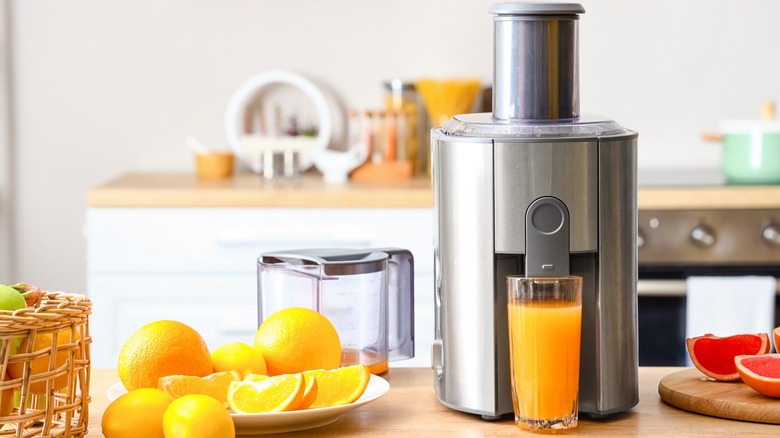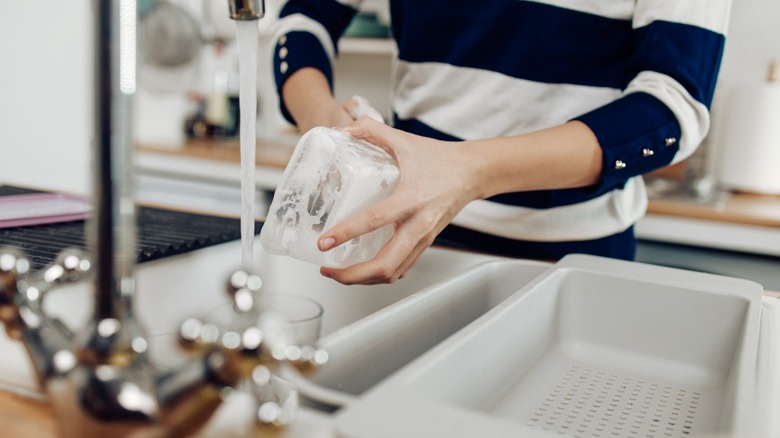The Tip For Keeping Your Juicer's Pulp Basket Clean Without Washing It
Juicers have revolutionized our approach to consuming fruits and vegetables. These machines extract the essence of various produce, enabling us to consume a cocktail of nutrients in a single glass. But, keep in mind that juicers require proper cleaning and maintenance. The different parts of the juicer each need careful attention during cleaning, with the pulp basket in particular often requiring extra effort as it collects residual fibrous materials after the juicing process. An effective way to simplify cleaning this container is by preventing the mess in the first place.
By simply lining the pulp basket with plastic wrap or a disposable bag prior to juicing, you can significantly reduce the cleanup effort. This lining acts as a protective layer that prevents direct contact between the pulp and the container, thus avoiding stubborn residues that would require soaking and scrubbing. Afterward, just remove the liner and dispose of it, leaving the container relatively clean. Despite the effectiveness of this method, it's still essential to uphold a standard of hygiene by cleaning the pulp basket from time to time. The lining technique is incredibly beneficial for scenarios where you are preparing multiple juices consecutively.
More cleaning tips for your juicer
In addition to keeping the pulp container clear, there are other practices you can adopt to maintain your juicer's overall cleanliness and functionality. To start with, rinse the juicer components immediately after use to prevent any residue from drying and sticking. Warm water is particularly effective in removing the remnants of fruits and vegetables. When cleaning, a soft brush can make a significant difference since brushes can reach into nooks and crannies where sponges might not be as effective.
For a deeper clean, consider soaking the removable parts in a mixture of warm water and mild dish soap. This helps loosen any stuck particles, which makes it easier to rinse them off later. Lastly, never dunk the base of your juicer in water. The electrical components within the base are sensitive, and direct contact with water can lead to damage or even safety hazards. Instead, use a sponge. Ensure that it's not overly wet, then carefully navigate around the buttons and electrical ports. Following this, dry the base with a towel to prevent any residual moisture that could penetrate the internal components. By following these cleaning tips, you can ensure that your juicer remains in optimal condition, ready to produce fresh and nutritious juices whenever you need them.

